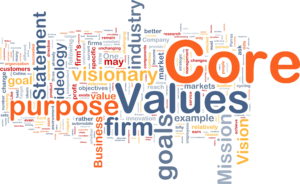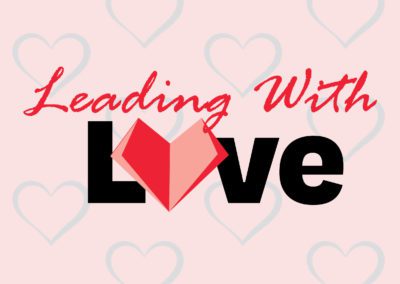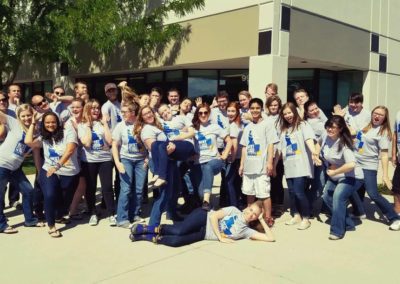Over the last few weeks, we’ve been on a hiring spree here at Newsletter Pro, and over the last five years, we’ve hired over 100 amazing team members.

Unfortunately, during those years we’ve also lost some great people, and even more unfortunately, we’ve had to fire some folks as well.
In the end, we’ve learned some valuable lessons about what works for us — and what doesn’t. I want to share with you two wins and two lessons learned the hard way, in the hopes that you can walk away with a few ideas that can help you grow this critical skill.
Win No. 1: A Matter of Time
Win: One challenge we’ve run into with hiring is how many hours go into the process. To add insult to injury, many of those hours were with managers who already have a ton of work they need to get done. Taking an hour away from a manager for each of the dozen people you need to interview for the most recent open position isn’t easy. As my team was chatting about this challenge, one of them offered up the suggestion of “speed dating” for interviews. At first the idea was not well-received, but as the team talked it through, they decided to give it a shot.
Here’s how it works:
Step one in our process has always been to spend 10-15 minutes screening any good resumes over the phone. In one of our most recent open positions, this got us down to a dozen potential applicants.

Next we schedule everyone on the same day, at the same time, for their speed interview. Candidates are briefed on the process, while managers and supervisors are given set questions they should ask.
Members of leadership are broken up into “stations,” and each station focuses on a different part of the interview (work history, personality, etc.). The candidates rotate through each station, spending 10 minutes in each.
At the end of the “speed-date,” we debrief the candidates, making sure they don’t have any additional questions.
When the interview is concluded, my managers have a conversation about the candidates and decide who to move forward. In this example, we went from 12 people at the start of the process down to three. The best applicants are brought back for a one-on-one interview, and potentially a shorter group interview.
Overall, this new plan has helped us shave approximately 20 hours off the total interview and hiring process, and so far, the new hires appear to be working out great
Lesson learned:
Early on at Newsletter Pro, we didn’t have any kind of system for hiring people. Everyone was asked different questions during the process, and how we evaluated resumes was based on how the person (likely me) felt about the information on the resume. Sometimes we even got in such a jam for a body who could do the work that we made a hire based on the first semi-decent resume and interview that came our way.

As you can imagine, this was a huge mistake on many levels. I am now a firm believer that you must have a system for hiring regardless of how few or how many people you may need. At a minimum, that system needs to include a solid job description so you know what skills you’re looking for; phone interview questions; in-person interview questions; group activities and questions; and finally, you must be looking for clues to find out if they will be a good personality fit for your team.
Our process was not this detailed in the beginning, but that lack of detail at the start has caused issues over the years, and I truly wish I could have started off doing things the right way.
Win No. 2: The Company You Keep
Win: Nearly two years ago, we set out to develop a company culture. I have to admit, I wasn’t 100 percent sure we needed to invest tens of thousands of dollars and hundreds of man hours into creating a culture.
Fast-forward to today, and I can say without a doubt, it was one of the single best investments we ever made.
Here’s what the investment looks like:
Our company culture has had an impact on numerous aspects of our success, including how we hire. Our first criteria for anyone we interview is that they fit in with our nine core values and our special brand of crazy. Before we implemented our core values, we had a 50/50 success rate on new hires, meaning that half would work out and half would quit or get fired shortly after starting. With many estimates putting the cost of a bad hire at $10,000 or more, this mistake was expensive.

The cost for us was not just monetary; overall, company morale would plummet because of a bad hire, and at the end of the day, that former employee had a lot of stress, and maybe even shame over no longer having a job. No one was winning.
You must develop a set of core values that every single person in the company has in common.
When you set out to hire, the first round of tests is to see if this person fits your core values. If they don’t, no matter how much you need a body or how good their resume is, they don’t get to the second round of interviews — no compromises on this.
Now that we start our filtering with checking for a core values fit, we have a 95 percent success rate in making a hire that sticks. A good book that, in part, teaches about core values, is “Scaling Up” by Verne Harnish.
Lesson learned:

You’ve likely heard the saying “Slow to hire and quick to fire.” In some sense, that is true — you need to hire slow and, at times, fire fast — but I’ve come to realize that most of the time, the people I’ve had to fire ultimately got to the point of being fired because I failed them as a leader somewhere along the way.
That failure could have been a poor hiring decision, a lack of training, a vague job description, or even a lack of clear and regular job performance feedback from me. Any way you slice it, that is my failure as a leader.
As an entrepreneur, I know it is more fun to create new sales strategies or an amazing marketing system, but it’s all for naught if you can’t find, hire, train and retain amazing employees. Because when you look back at your growth 5 years from now, it won’t be solely based on your efforts, but on the collective contributions of the exceptional people who have had your back along the way.






